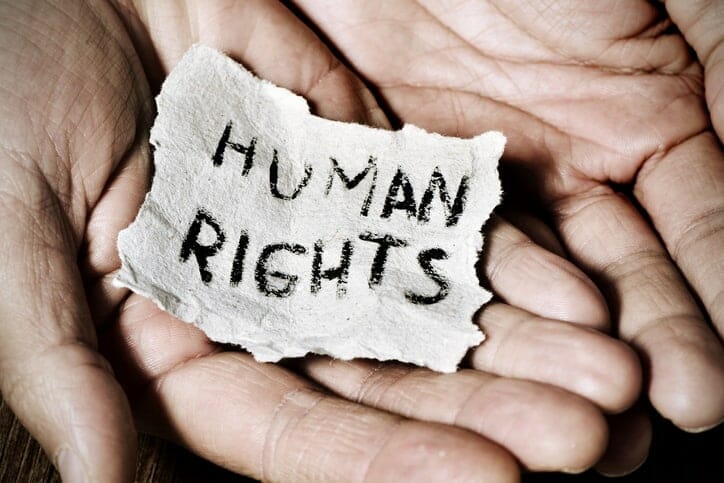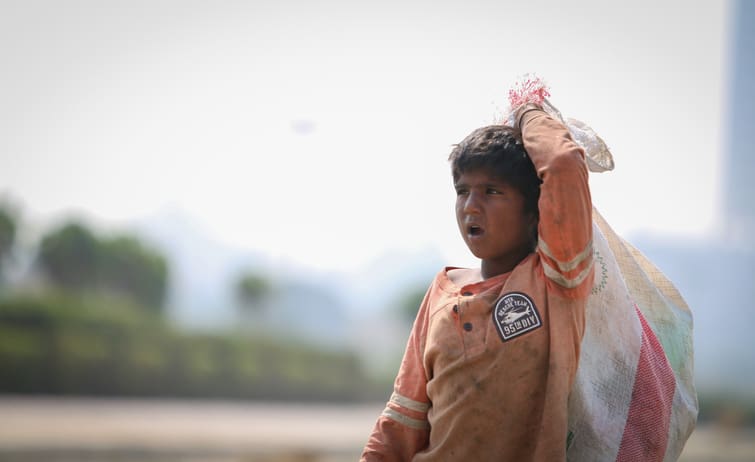Upholding human rights makes good business sense because societies can’t thrive if profits come at the expense of human dignity. Human rights are rooted in international law and enshrined in frameworks like the UN’s Guiding Principles on Business and Human Rights. Governments and companies are compelled to protect them, but investors could do more to ensure they do, said an expert panel speaking on the role of finance in human rights at the PRI in Person in Paris.
The PRI is busy working to build an understanding across its signatory base about how investors can do more to manage human rights risk. For many, the process begins with identifying where the most serious human rights risk lies in their portfolio; looking at where they can have most impact and where they should prioritise.
“Companies and investors should prioritise the issues they can deal with, but remember they can’t do everything,” said Barbara Bijelic, legal expert, responsible business conduct, OECD, involved in launching guidelines on the roles and responsibilities of asset owners and managers around human rights.
Voting and engagement are significant tools, she said. For example, investor efforts put pressure on pharmaceutical groups to tighten the distribution of their medicines so they were not used in lethal injections in US prisons.
“Investors can make a real difference on the ground,” she said.
Lack of data
A lack of data hampers investors ability to use their capital to safeguard human rights. The panel noted there are few credible organisations publishing reports about abuses on the ground. “Reporting and disclosure means everything to us; without this we can’t prioritise,” said Wilhelm Mohn, head of sustainability in corporate governance, Norges Bank Investment Management. Nor are there coherent frameworks. One solution here could be drawing expertise from policy and regulatory drivers beginning to shape climate policy in Europe. But here experts noted the lag in human rights awareness over climate awareness. For example, the Dutch regulator identifies climate risk as a financial risk, but doesn’t put human rights risk in the same bracket. Moreover, most human rights policy initiatives are focused around disclosure and reporting, but this is only one piece of the puzzle, said Bijelic.
NBIM ensures it speaks to portfolio companies, irrespective of international principles. Investing in around 9000 companies across seven markets the manager says its approach is rooted in the principles held in its mandate from Norway’s Ministry of Finance. Leverage includes engagement and exclusion, but because the organization is a global investor, it doesn’t make sense “to pick some rights over others.” Instead, it tries to map out human rights at a sector level, looking at what companies have most exposure to risk and are in need of engagement, and define clear mechanisms for mediation.
Some leverage points are more effective than others, depending on the sector and the rights. For example, voting is a rarely used tool in the context of human rights, he said. Although it is easy to file shareholder proposals in some markets, in others it is difficult.
“There has been an increase in voting but from a low base,” said Mohn and also stressed the importance of collaborative action.
For example, NBIM has worked with UNICEF to safeguard children’s rights in supply chains. The process involved working with a selection of strong brands, and a reporting mechanism that various experts and companies have fed into. A pilot will follow, making concrete steps and real change possible, he said.
The panel also touched on the materiality of human rights.
“Investors do need to care,” said Seema Joshi, director, global thematic issues at Amnesty International who said when things human rights are neglected, investor returns are hit.
She cited the organisation’s research and analysis into cobalt mining in the DRC in 2015 as an example of how investors can step-in to affect change. Amnesty collectively contacted 30 companies and pointed out human rights abuses in their cobalt supply chains – but got few responses.
“There is a gap between what companies say they are doing regarding human rights and their due diligence, and what the true findings are,” she said. “Investor could play a significant role in bridging that gap to find solutions.” She added that investors have an ability to compel more transparency from companies, and that more regulation would help.
“In my own view, it is in investors’ interest to support calls for more regulation,” she said.
Dutch banking group ABN Amro looks at the human rights risk in its lending portfolio where teams advising on sensitive loans often come across labour and land human right risk particularly. The bank advises on a transaction by transaction basis, however if has multiple clients in one sector, it will talk collectively on human rights risk although client confidentiality does hinder transparency.
“These issues are so complex and integrated, a multi stakeholder approach is best,” said Maria Anne van Dijk, global head of environmental, social and ethical risk at ABN Amro.
“NGOs have the idea that banks have super-powers and leverage over everything, but banks are very hesitant and reluctant to talk about remedy.”
She said that remedy infers compensation. However, it also involves an apology or trying to prevent human rights abuses happening again, she concluded.


